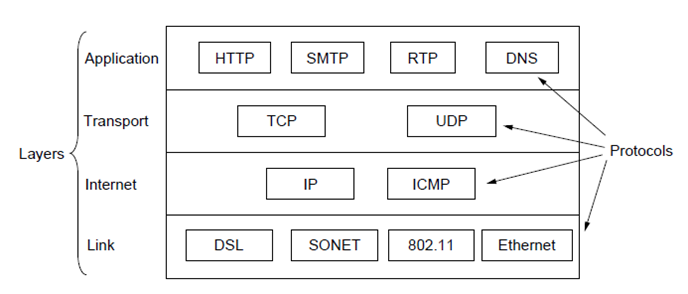Overview of the Transport Layer in the Internet : One of these protocols is UDP(User Datagram Protocol), which provides an unreliable, connections service to invoking application. The second of these products is TCP(Tansmission Control Protocol), Which provides raliable, Connection-orient service to the invoking application. When designing a network application, the application developer must specify one of these two transport protocols. As the application developer selects between UDP and TCP when creating sockets.
To simplify terminology, when in an internet context, we refer to the transport-layer paket as a segment. We mention, however, that the internet literature(for exxample RFC’s) also refers to the transport layer packet for TCP as a segment but often refers to packet for UDP as a datagram. But this same internet literature also uses the term datagram for the network layer packet. For an intorductory concepts on computer networking such as this, we believe that it is less confusing to refer to both TCP and UDP packets as segments, and reserve the term datagram for the network-layer packet.

TCP on other hands, offers several additional services to the applicatio. First and foremost, it provides reliable data transfer. Using flow control, sequence numbers, acknowledgements, and timers(techniques we’ll explore in detail in this chapter), TCP ensures that data is deliver from sending process to receiving process; correctly and in order. TCP thus coverts IP’s unreliable srvice between and systems into reliable data transport service between processes. It also provides terms into a reliable data transport service between processes. TCP also provides consgeston control.
Multiplexing and Demultiplexing –
let’s now summarize the service models provided by UDP and TCP. The most findamental responsiblity of UDP and TCP is to extend IP’s delivery services between two end systems to a delivery service between two processes runnig on the end systems. Extending host-to-client delivery to process-to-process delivery is called tansport-layer multiplexing and demultiplexing. UDP and TCP also provide integrity checking by including error-detection fields in their segments header.




